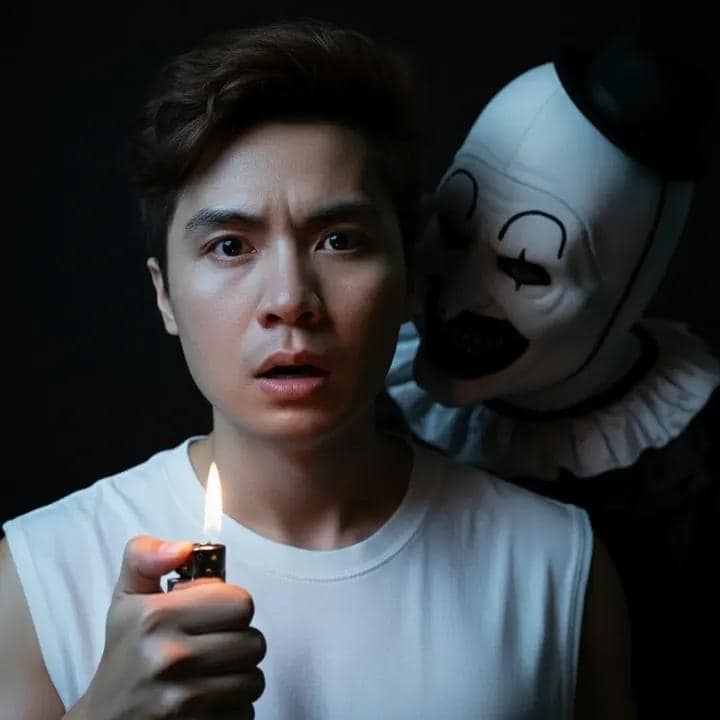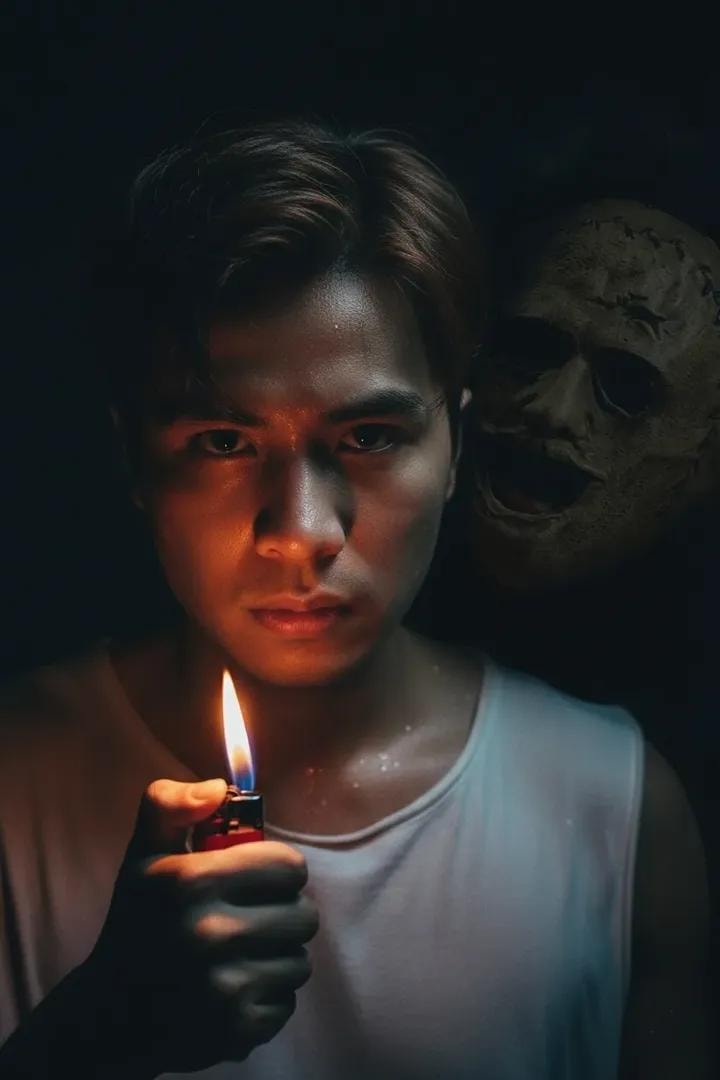
How to use this prompt
Upload your reference image for accurate face rendering. Use cinematic lighting with strong orange and blue color contrast. Add realistic sweat texture and reflection from the lighter. For Midjourney, use `--ar 16:9 --v 5 --q 2` for horizontal framing. In Stable Diffusion, set contrast high and emphasize realistic light falloff on the face and neck. The horror character should be subtle—barely visible in the dark—to create a psychological tension effect.
Prompt
8K cinematic portrait of a man holding a lit lighter near his face. The flame casts dramatic orange and blue light across his sweaty skin. His expression is tense, eyes fixed forward. Behind him, in the dark, (insert horror character name) whispers into his ear, half hidden among the shadows. The image is cinematic, realistic, high-detail, with moisture and flame reflections on the face. Moody lighting, eerie atmosphere, hyper-real texture, film still quality.
Why this prompt works
This prompt works because it uses contrasting warm and cool lighting from a single flame to create strong emotional tension. The sweat texture adds realism and intensity, while the hidden horror character in the background builds psychological fear. It’s a cinematic setup that feels alive — like a moment frozen before something terrible happens.
Example Output
Here's an example result generated with this exact prompt:

Prompt Variations
- Replace 'lighter' with a 'candle' for a gothic horror atmosphere.
- Replace 'horror character whispering' with 'shadowy figure looming behind him' for a ghostly thriller vibe.
- Add 'rain dripping from his face' for a gritty urban horror setting.
- Make the horror character 'Pennywise' or 'The Nun' for an iconic cinematic crossover look.
FAQ
How can I make the lighting more dramatic in the AI image?
Use high contrast between warm orange and cool blue tones. Position the lighter close to the face so shadows fall sharply and reflections enhance the mood.
What makes the horror character look realistic in the shadows?
Keep the character only partially visible. Let their outline or one facial detail catch faint light. This suggestion of presence feels far more unsettling than a clear view.